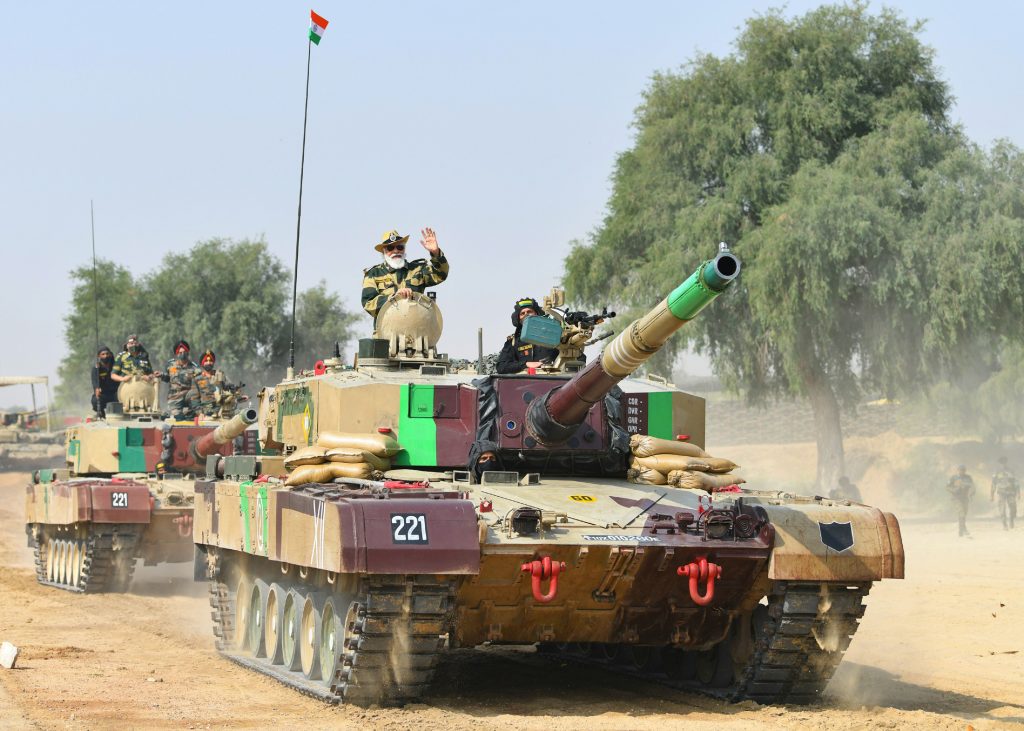Arzan Tarapore

But the Quad is not bulletproof. Some experts have suggested that the economic and diplomatic effects of the devastating second wave of the pandemic in India will preoccupy the Indian government, sapping the Quad of capacity for any new initiatives. Others counter that India remains committed to competition with China—which is what really matters for the Quad—although its partners always expected ‘two steps forward, one step back’ from India.
The pandemic may well prove to be a hiccup in the Quad’s evolution; but a potentially much larger disruption may come from the ongoing Ladakh crisis itself. As I argue in a new ASPI Strategic Insights paper, the crisis has greatly increased the risk of a border war between India and China, which would present a defining test of the Quad. A possible war could either strengthen or enervate the Quad—depending on how India and its partners, including Australia, act now to shape the strategic environment.
Risk is a function of likelihood and consequence. The likelihood of war on the India–China border is still low—both countries would prefer to avoid it—but has risen since the crisis began. Both countries have greatly expanded their military deployments on the border, and backed them with new permanent infrastructure to resupply and reinforce them. China has proved its revisionist intent with large and costly military incursions, although its specific objectives and plans remain unknown. And the interaction of both countries’ military strategies and doctrines would, on the threshold of conflict, promote escalation.
The consequences of a possible conflict would be dire for both belligerents and for the region. China —assuming it is the provocateur of conflict—would likely face some political rebuke from states that consider themselves its competitors, but it will work strenuously to reduce those costs, and would likely have priced them in to its calculations of whether to fight. India will suffer high tactical costs on the border, and may also suffer wider harm, if China uses coercive cyberattacks against strategic or dual-use targets.
In a costly war, the repercussions may spill over to damage India’s recently developing strategic partnerships, especially with the United States and Australia. Despite generally favourable views of the US, the Indian strategic elite still harbours some latent suspicions. This was highlighted in two episodes in April 2021, when the US Navy conducted a freedom of navigation patrol through the Indian exclusive economic zone, and when the US was slow in delivering Covid-19 vaccine raw materials and other relief. Both instances quickly receded from the Indian public imagination—thanks to quick correctives from Washington—but they did reveal that, under some conditions, Indian perceptions of its new partnerships can be quickly coloured by distrust.
A China–India border war may create exactly those conditions. There is a chance that conflict may result in a redoubled Indian commitment to the Quad, if New Delhi judges that it has no option but to seek more external assistance. Conversely, unless a conflict is managed well by India and its partners, it is more likely to result in Indian disaffection with the Quad. India deepened Quad cooperation during the Ladakh crisis partly as a deterrent signal to China, and partly because the Quad is still full of promise. However, after a conflict—when China hasn’t been deterred and has probably imposed significant costs on India—the Quad’s utility would have been tested, and probably not ameliorated India’s wartime disadvantage.
The task before Quad governments is to be sensitised to this risk and implement mitigation strategies before a possible conflict, to buttress the coalition in advance. As I outline in the ASPI paper, they could do this at three levels. First, they could offer operational support—such as intelligence or resupply of key equipment, as the US already has done in the Ladakh crisis—although Quad partners’ role here would be limited. Second, they could provide support in other theatres or domains—with a naval show of force, for example, although cyber operations would probably be more meaningful in deterring conflict or dampening its costs. Third, they could provide political and diplomatic support—signalling to Beijing that a conflict would harm its regional political standing.
For Quad members, the main goal would be to deter conflict in the first place, and, failing that, to preserve the long-term strategic partnership with India for the sake of maintaining as powerful and energetic a coalition as possible to counterbalance China in the long term.
No comments:
Post a Comment